
|
Lumbar Prolapsed Intervertebral Disc (PID) or herniated nucleus pulposus (HNP) and Sciatica |
|
Copyright © 2008 Spine Care Hong Kong |

|
SPINE CARE HONG KONG |
|
ACCURATE DIAGNOSIS, STRUCTURED TREATMENT |

|
Normal Disc and Examples of Disc Herniations |
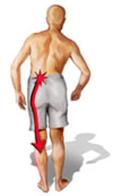
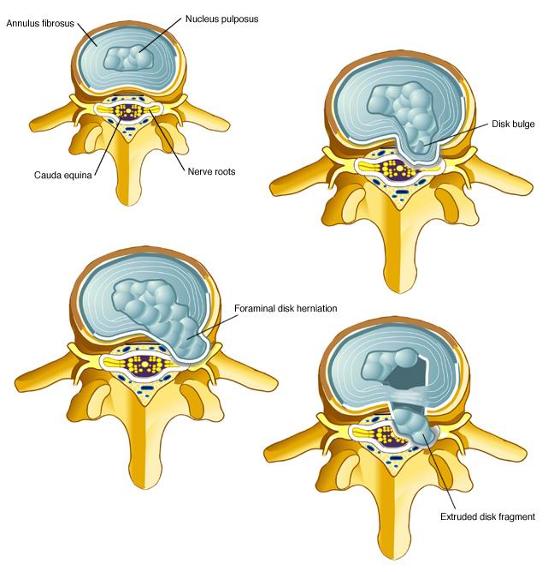
|
Damage or rupture of the annular disc fibers may allow the jelly like nucleus pulposus to herniate out. If the herniated fragment bulges out posteriorly then it may cause pressure typically over the traversing root, on occasions if the herniation is very posterolateral then compression of the exiting nerve root in the neural foramen may result. Patients will typically complain of leg pain with or without back pain. Unless there is neurological deficit most surgeons will advocate a period of conservative treatment with oral anti inflammatory medications and physiotherapy for 8-12 weeks to observe the progress. Most patients will improve. In cases of failed conservative treatment then surgery for decompression may be advised. Decompression techniques for discectomy have progressed from open to mini-open to microdiscectomy and more recently minimally invasive techniques with tubular retractors for muscle dilation. A minimally invasive MEDRx microdiscectomy can be performed with a wound 1.5cm in length. Certain lateral and far disc herniations may be treated via a percutaneous transforaminal approach wound sizes around 0.5cm in length and without the need for general anaesthesia. |
|
Sciatica and Listing |
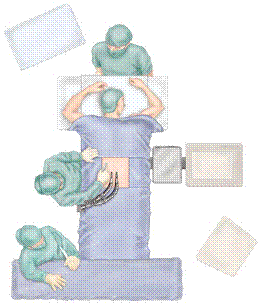
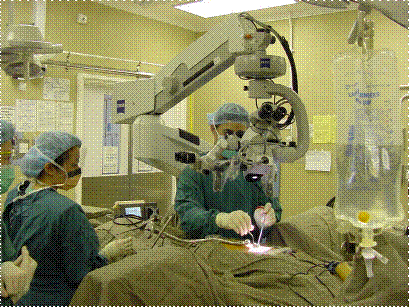
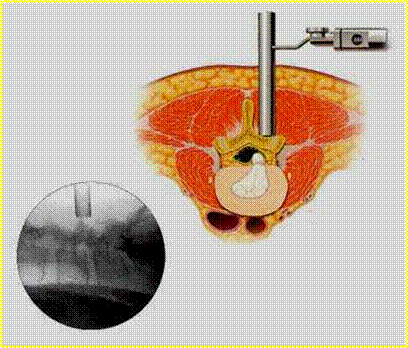
|
MINIMALLY INVASIVE TUBULAR RETRACTORS for DISCECTOMY |
|
OPERATING ROOM SETUP FOR MINIMALLY INVASIVE APPROACH |
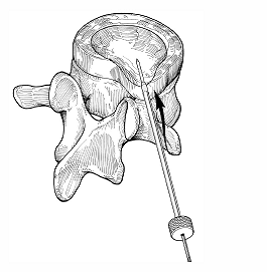
|
PERCUTANEOUS DISCECTOMY |
|
Percutaneous Discectomy |
